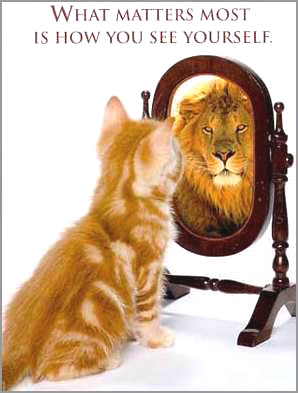“Hold a picture of yourself long and steadily enough in your mind’s eye and you will be drawn toward it. Picture yourself vividly as defeated and that alone will make victory impossible. Picture yourself vividly as winning and that alone will contribute immeasurably to success. Great living starts with a picture, held in your imagination, of what you would like to do or be.” -Dr. Harry Emerson Fosdick
Is there an aspect of your personality that gives you grief? According to Dr. Maltz, you can change it in just 21 days by following these instruction!
The following practice exercise is a tool made popular by a plastic surgeon named Dr. Maxwell Maltz, who, in his many years of operating on people, noticed that it was impossible to alter a person’s face without altering a person’s inner self, too. This parallel between the outer and inner connected self led to an epiphany that spurred Dr. Maltz’s famous breakthrough work on self-image, self-esteem and the science of the mind, known as Psycho-Cybernetics.
If you want to change something about your personality, whether you are shy, unsuccessful, unmotivated, unhappy or maybe, there is something else you are working on, give this a try. Dr. Maxwell Maltz claims positive and noticeable changes to self-image in only 3 weeks by practicing 30 minutes each day. It takes that long to form a habit. The key to this success is to fool your nervous system by building “new memories” or stored data into your mid-brain and central nervous system.
Practice Exercise by Dr. Maxwell
Your present self-image was built upon your own imagination pictures of yourself in the past which grew out of interpretations and evaluations which you placed upon experience. Now you are to use the same method to build an adequate self-image that you previously used to build an inadequate one.
Set aside a period of 30 minutes each day where you can be alone and undisturbed. Relax and make yourself as comfortable as possible. Now close your eyes and exercise your imagination.
Many people find they get better results if they imagine themselves sitting before a large motion picture of themselves. The important thing is to make these pictures as vivid and as detailed as possible. You want your mental pictures to approximate actual experience as much as possible. The way to do this is pay attention to small details, sights, sounds, objects, in your imagined environment. One of my patients was using this exercise to overcome her fear of the dentist. She was unsuccessful, until she began to notice small details in her imagined picture – the smell of the antiseptic in the office, the feel of the leather on the chair arms, the sight of the dentist’s well-manicured nails as his hands approached her mouth, etc. Details of the imagined environment are all-important in this exercise, because for all practical purposes, you are creating a practice experience. And if the imagination is vivid enough and detailed enough, your imagination practice is equivalent to an actual experience, insofar as your nervous system in concerned.
The next important thing to remember is that during this 30 minutes you see yourself acting and reacting appropriately, successfully, ideally. It doesn’t matter how you acted yesterday. You do not need to try to have faith you will act in the ideal way tomorrow. Your nervous system will take care of that in time… if you continue to practice.
See yourself acting, feeling, “being,” as you want to be. Do not say to yourself, “I am going to act this way tomorrow.” Just say to yourself, “I am going to imagine myself acting this way now, for 30 minutes, today.” Imagine how you would feel if you were already the sort of personality you want to be. If you have been shy and timid, see yourself moving among people with ease and poise, and feeling good because of it. If you have been fearful and anxious in certain situation, see yourself acting calmly and deliberately, acting with confidence and courage, and feeling expansive and confident because you are.
This exercise builds new “memories” or stored data into your mid-brain and central nervous system. It builds a new image of self. After practicing it for a time, you will be surprised to find yourself “acting differently,” more or less automatically and spontaneously, “without trying.” This is as it should be. You do not need to “take thought” or “try” or make an effort now in order to feel ineffective and act inadequately. Your present inadequate feeling and doing is automatic and spontaneous, into your automatic mechanism. You will find it will work just as automatically upon positive thoughts and experiences as upon negative ones.
Excerpt taken from the book, Psycho-Cybernetics by Dr. Maxwell Maltz
As with any exercise for improvement, it only works when you do it!


thanks, nice post.
This article is a great help to me! Thank you!